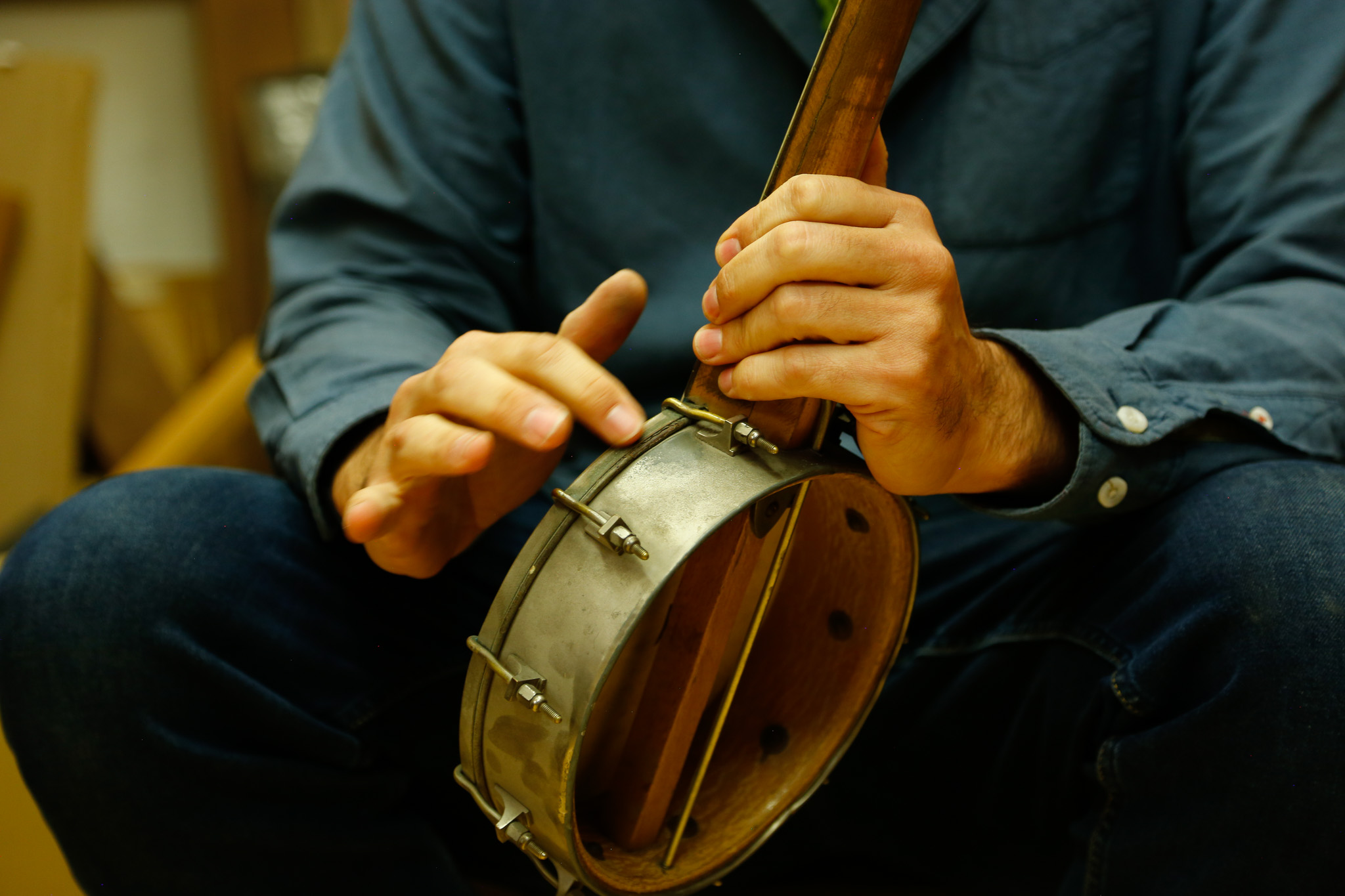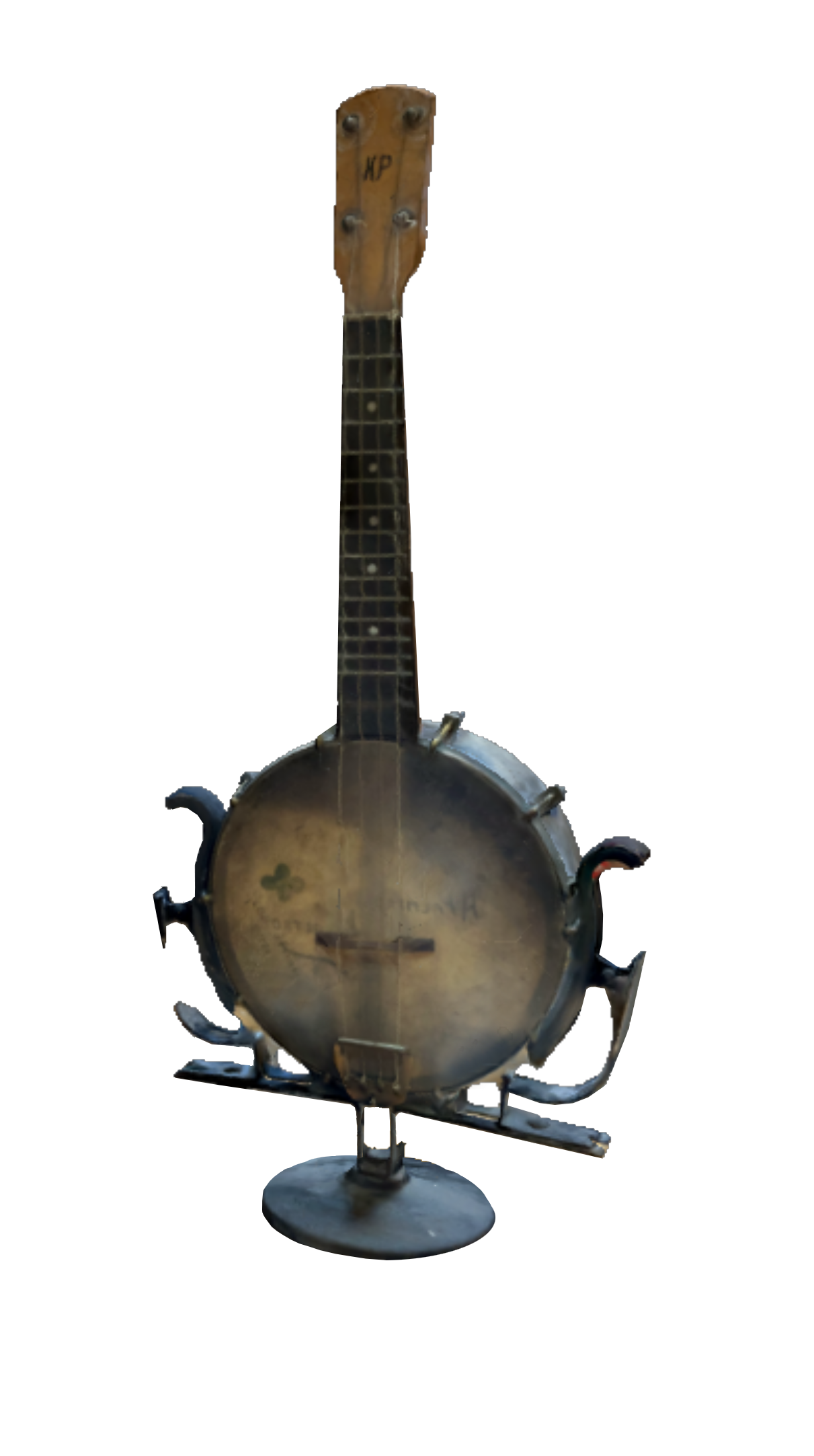Omri Schitrit - Folkies Music
On the opening night at the Gaumont State Cinema, which was in 1938, George Formby was playing a banjo like this. The Gaumont State was magnificent, the biggest concert hall in Europe at the time. They chose to go on stage and play the banjo as an opening act - not a choice of a band or an orchestra, just this funny guy getting on stage with one of these instruments.

A lot of funny songs like working class window cleaners and all this and how he gets in trouble. Through him, you can understand the history of this place you can really pick up the vibe, the atmosphere or the sense of humour that was popular at that time. People loved his music, especially at the time. People relating to
it still got an important part in shaping the culture and music. It brings a lot of memories for other generations who grew up watching these films in the 60s.

So I used to work in Blanks, which was another music shop down the road. In the early 2000, in the concert to commemorate George Harrison, Paul Mc Cartney played the ukulele, and suddenly people wanted to buy ukuleles. There was one company that made inexpensive ukuleles called Mahalo - they were very cheap and basic, and these were the only ukuleles available for sale at the time. And the only book for teaching ukulele was the George Formby. But there was no correlation between the book and the instruments because the instruments were so basic and cheap, and the book was so complicated.

Although it sounds quite
simple, he was actually a very good player. So
that’s how I kind of came across the ukulele first, we
sold them for a few years and suddenly there was a
much bigger demand. But
This one is quite special. George Formby was the
local hero before my time, he was the biggest film star
in the 30s, he influenced a lot of people, and this
instrument was signed
and there is a clover. You couldn’t take a selfie with
any celebrity - the only thing you could do is to
get a signed postcard or in
this case, a signed ukulele.So it’s definitely not his
instrument.
![]()
I found it by chance in an auction that doesn’t exist anymore. I went to have a look at some violins, and it was just the last item in the sale, and I didn’t think too much of it because I thought it’s either going to draw a lot of attention, or maybe no one will be even noticing. Two days later I realized that I was the only bidder, so I got it.
![]()
And normally all instruments that come in, we tend to restore and do them up so they can play, but here a few frets is missing and it’s still got gut strings made of sheep gut and I didn’t think of replacing any of them. And I just thought, yeah, we’ll keep it as original as possible and it still plays!
![]()
The banjo signed byGeorge Formby.
Photo by Itay Kashti

I found it by chance in an auction that doesn’t exist anymore. I went to have a look at some violins, and it was just the last item in the sale, and I didn’t think too much of it because I thought it’s either going to draw a lot of attention, or maybe no one will be even noticing. Two days later I realized that I was the only bidder, so I got it.
And normally all instruments that come in, we tend to restore and do them up so they can play, but here a few frets is missing and it’s still got gut strings made of sheep gut and I didn’t think of replacing any of them. And I just thought, yeah, we’ll keep it as original as possible and it still plays!
The banjo signed byGeorge Formby.
Photo by Itay Kashti
